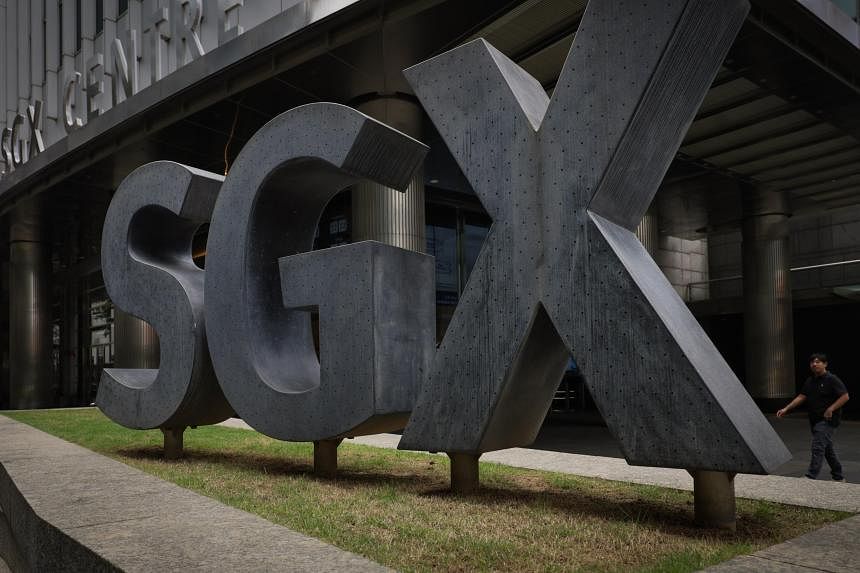SINGAPORE - Markets had their worst week since October 2023 as investors digested the US Federal Reserve’s reluctance to commit to early rate cuts and data showed continuing tightness in the jobs markets.
Meanwhile, there are growing concerns about potential upward price pressure due to the disruption to global shipping in the Red Sea.
On Wall Street, the Dow Jones Industrial Average gave up 0.93 per cent for the week to end at 38,722.69, while the S&P 500 slid 0.26 per cent to 5,123.69 points. Nasdaq, whose rise has been fuelled by semiconductor and AI-related plays, gave up 1.17 per cent last week to end at 16,085.11 points.
This came amid data showing that US jobs numbers in February came in at a higher-than-expected 275,000, although the unemployment rate edged higher to 3.9 per cent. The theory goes that a robust job market and resulting higher spending power could put upward pressure on prices.
Meanwhile on Capitol Hill, Fed chair Jerome Powell told policymakers that given the inflationary risks, the US central bank would not want to ease up too quickly.
“The committee does not expect that it will be appropriate to reduce the target range until it has gained greater confidence that inflation is moving sustainably towards 2 per cent,” the central bank leader said.
But he did add that the Fed believed that the policy was likely at its peak for this tightening cycle.
“If the economy evolves broadly as expected, it will likely be appropriate to begin dialling back policy restraint at some point this year,” Mr Powell added.
In Singapore, the Straits Times Index (STI) spent much of the final session of the week testing 3,150, before finishing the session at 3,147.09, up 0.4 per cent on the week.
The recent bout of consolidation began with the STI ending below 3,150 on Feb 28. The STI subsequently closed near 3,100 on March 5 before returning to the 3,130 level in the subsequent session and retesting 3,150 on March 8.
This brings the year-to-date total return for the STI to negative 2.6 per cent.
Data compiled by the Singapore Exchange shows that for most of the week, Yangzijiang Shipbuilding, Singtel, Seatrium, ST Engineering, Frencken Group and CapitaLand Investment booked the most net institutional inflow, while UOL Group, the trio of banks and Jardine Cycle & Carriage saw the most net institutional outflow.
The Singapore market remains in a slump.
Take Singtel, which recently sold a 0.8 per cent stake in Indian telco Bharti Airtel for about $950 million to US-based investment firm GQG Partners.
Singtel’s remaining 29 per cent stake in Bharti Airtel is worth some $33 billion, which is almost 85 per cent of its $39 billion market cap.
Singtel also has stakes in Australia’s Optus, Indonesia’s Telkomsel, Netlink NBN and its data centres. Surely their combined values add up to more than the remaining 15 per cent of Singtel’s market cap?
It’s the same under-appreciation with others like City Developments (CDL), Keppel, Singapore Airlines, ST Engineering and Sembcorp.
CDL last week bought back 954,000 of its own shares at $5.75 each, which represents a 43 per cent discount to its net asset value (NAV) of $10.20 and 70 per cent discount to its revalued NAV per share of $19.46 as at December 2023.
Meanwhile, among the mid- and small caps, even generous dividend payouts have not done much to attract interest in the likes of Sin Heng, Samudera Shipping, Tiong Woon and Straco.
The Singapore market remains beached by poor liquidity and low valuations. This has kept away good listings (Singapore’s ride-hailing firm Ryde listed in New York last week), while many listed companies here are eyeing privatisation.
The sad fact is that the current state of its equity market does not reflect well on Singapore’s status as a financial hub.
So what next?
But first a quick recap of the week that was. Gold has hit new highs. Meanwhile, Bitcoin has soared another 30 per cent, bringing its total gains to 150 per cent over the past six months. Nvidia has become the world’s third-most valuable stock, after Apple and Microsoft. On the equity side, the risk-on rally has continued, even as the market debates the timing and size of rate cuts.
Bloomberg data shows that the S&P 500 has posted 15 all-time highs so far in 2024, the biggest number of records this far into a year since 1998. The rally in this broad index over the past four months is unusual from a historical perspective. But when it has happened in the past, the US stock market usually continued its winning streak for several more months.
What’s kept markets going so far is hope that the Fed in 2024 will cut rates, which historically has been good news for global equities.
Maybank’s head of research Thilan Wickramasinghe reckons the Fed now faces the hardest part of its job – ensuring a soft landing.
“Cut rates too late, and landing turns into a crashing recession. Cut too early, and inflation takes off again. During his testimony in front of Congress, the Fed chair hinted that there is a probability of rate cuts later in the year. The markets may see this as a positive signal that the current trajectory of inflation is under control. We think this would encourage market momentum to be weighted towards the bullish side,” he pointed out.
Meanwhile, UBS’ regional chief investment officer Kelvin Tay is sticking to his thesis that the Fed will cut only in June and by 75 basis points this year: “Markets have to reprice their expectations.”
Mr Vasu Menon, managing director for investment strategy at OCBC, is cautiously upbeat on equities.
“If history is any guide, this rally may have more legs,” he said. “Playing devil’s advocate, what if inflation surges again and the Fed does not cut rates this year? We feel that even if this happens, it will not derail the bulls, provided the resurgence in inflation is due to a reacceleration of the economy, which will boost the outlook for corporate profits. Some inflation may also be good for companies as it will help them to raise prices.”
He said that while tech stocks have led the rally so far, the momentum could broaden out to a wider segment of the markets that have lagged behind till now.
Indeed, going by history, markets could be poised for a multi-year rally akin to the one that happened in the early 1980s after then Fed chairman Paul Volcker fought aggressively against inflation and won the battle. What followed was a five-year rally in the S&P 500 index that saw it rising by more than 200 per cent.
DBS’ chief investment officer Hou Wey Fook is encouraging investors to engage bonds with elevated yields now as an anchor to portfolios: “If the economy deteriorates, the Fed put will be in play. So I see it as constructive to put cash to work!”
In short, the message market experts are putting out is that there will be some volatility in the market, but the uptrend remains intact. The tech-led rally could spread to other segments of the market. And there is a lot of cash on the sidelines to fuel the market’s rise.
Going forward into the next few weeks, several indicators will offer further insights into the outlook for the economy and inflation, especially in the United States.
On March 14, the market will get a real avalanche of US data including retail sales, producer prices and initial and subsequent jobless claims figures. On March 15, the University of Michigan’s consumer confidence index and the Empire State index will be released.
However, US consumer prices, due on March 12, will probably be the main event of the week.
If they come in higher than expected, this could worry investors, but such concerns may be short-lived. Markets have come to realise that the path ahead for inflation will be uneven, and higher-than-expected data for one or two months may not alter the medium-term outlook for inflation, which is in a broad downtrend.
Meanwhile, the Fed Fund Futures market is still looking for less than 100 basis points in rate cuts in 2024, with the first cut in June 2024, followed by rate cuts in September and December. These should provide more of a leg-up for both equities and bonds.


